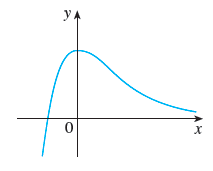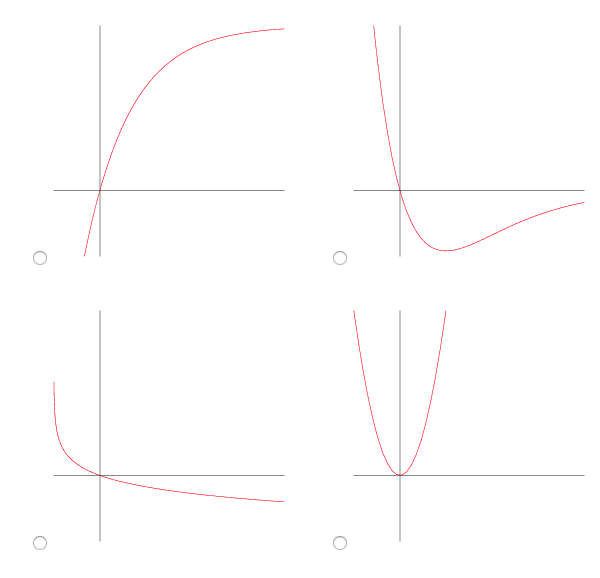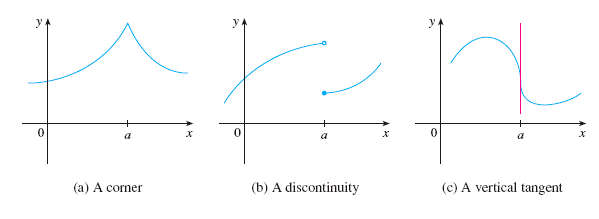

We learned last time that the derivative of \(f\) at \(a\) is defined by \[f'(a) = \lim_{h\to 0} \frac{f(a+h)-f(a)}{h}\]
The definition above gives a function that maps input \(a\) to \(f'(a)\).
Simply replace "\(a\)" with the conventional notation for an input, i.e. "\(x\)",
we have
\[f'(x) = \lim_{h\to 0} \frac{f(x+h)-f(x)}{h}\]
\(f'\) can be regarded as a new function,
called derivative of \(f\).
Given an input \(x\), \(f'(x)\) is equal to the slope of the tangent line of \(f\) at the point (\(x,f(x)\)).
Example 1. If \(f(x)=x^2\), find \(f'\).
Sol:
\[f'(x) = \lim_{h\to 0} \frac{f(x+h)-f(x)}{h}
= \lim_{h\to 0} \frac{(x+h)^2-x^2}{h}
= \lim_{h\to 0} \frac{2xh+h^2}{h} = \lim_{h\to 0} (2x+h) = 2x \]
Example 2.
If \(f(x)=\sqrt{x}\), find \(f'\) and its domain.
Sol:
\[\begin{aligned}
f'(x)&=\lim_{h\to 0}\frac{\sqrt{x+h}-\sqrt{x}}{h}\\
&=\lim_{h\to 0}\frac{\sqrt{x+h}-\sqrt{x}}{h}
\frac{\sqrt{x+h}+\sqrt{x}}{\sqrt{x+h}+\sqrt{x}}\\
&=\lim_{h\to 0}\frac{(x+h)-x}{h(\sqrt{x+h}+\sqrt{x})}\\
&=\lim_{h\to 0}\frac{1}{\sqrt{x+h}+\sqrt{x}}\\
&=\lim_{h\to 0}\frac{1}{\sqrt{x}+\sqrt{x}}
= \frac{1}{2\sqrt{x}}
\end{aligned}\]
The domain of \(f'(x)=\frac{1}{2\sqrt{x}}\)
is \(x>0\).
The domain of \(f(x)=\sqrt{x}\) is \(x\geq 0\).
Geometric interpretation: slope of \(f\) = derivative of \(f\)
How to tell \(f'(x)\) from the graph of \(f\): draw the tangent line of \(f\) at \((x,f(x))\), the slope of this tangent line is the value of \(f'(x)\)
Tricks:
Example.
If the graph of \(f\) is given below(blue curve),
which is the graph of \(f'\)?
Choose from the four red curves below.


Sol:
The only graph that matches those observations is the top-right one.
Definition. We say \(f\) is differentiable at \(a\) if \(f'(a)\) exists. If it differentiable on \((a,b)\) if \(f'(x)\) exists for any \(x\) in \((a,b)\).
Three cases where \(f\) is not differentiable at \(x=a\):

Theorem. If \(f\) is discontinuous at \(a\), then \(f\) is not differentiable at \(a\), i.e., \(f'(a)\) does not exist.
\(f''(x)\) denotes the derivative of \(f'(x)\).
\(f''\) is called the second derivative of \(f\).
\(f'''(x)\) denotes the derivative of \(f''(x)\).
\(f'''\) is called the third derivative of \(f\).
In general, \(f^{(k)}\) denotes the \(k\)th derivative of \(f\).
Example. Velocity is the (first) derivative of the position function. Acceleration is the second derivative of the position function.
If \(y=f(x)\),
then \(\frac{dy}{dx}=y'=f'(x)\) all denote derivative of \(f\).
\(\frac{d^2y}{dx^2}\) denotes \(f''\), the second derivative of \(f\).